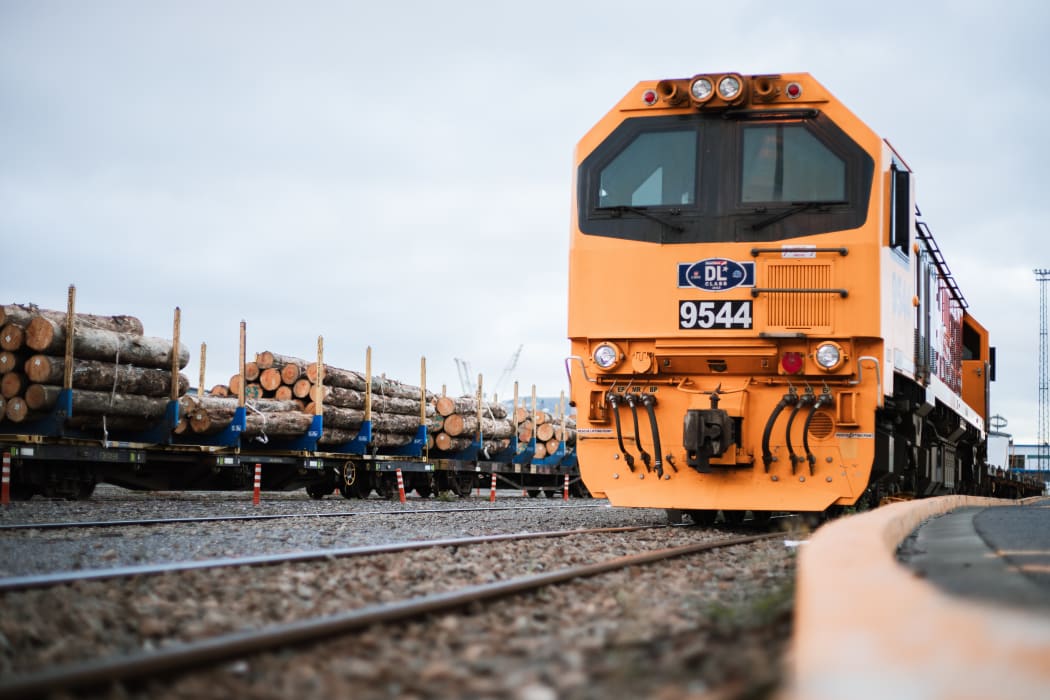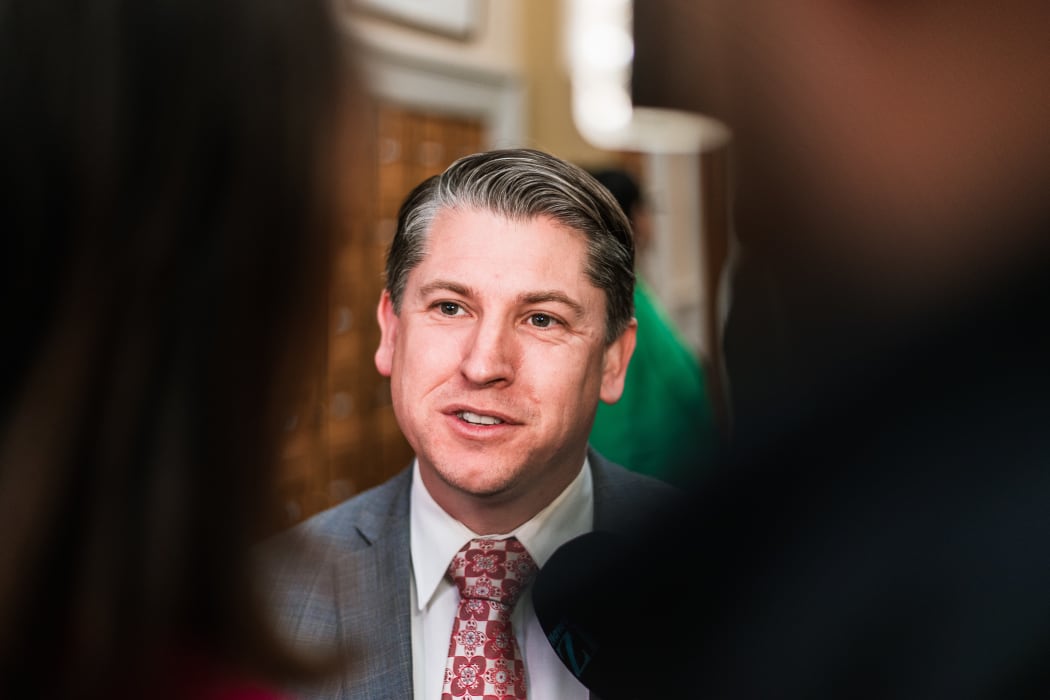New Zealanders are being urged to take care at level crossings - particularly in rural areas - for Rail Safety Week.

Photo: RNZ / Samuel Rillstone
The campaign's theme this year is aimed at raising rail safety awareness in rural areas, with TrackSAFE NZ research showing about 79 percent of rail crashes at level crossings happened in provincial and rural areas.
Launching this year's week-long campaign for rail safety in Wellington this morning, KiwiRail chief executive Greg Miller said that for them it was rail safety day every day and rail safety year all year.
"This year we're calling on motorists in rural areas to take care at level crossings," he said.

KiwiRail chief executive Greg Miller, centre. (file photo). Photo: RNZ / Samuel Rillstone
About 65 percent of the level crossings crashes were men aged 40 to 55, and most often happened in the morning between 6am and midday, he said.
"Interestingly enough they happen on the sunniest days of the year as these motorists try to beat the trains. They're rural people, they're rural workers, they're agricultural workers, they're farmers, so this year's strategy is about a wake-up call to rural New Zealanders."
He said the impact of a 1000-tonne train hitting a car was equal to that of 50 vehicles hitting all at once.
Transport Minister Michael Wood said more than 70 of the country's roughly 3000 level crossings had been upgraded since 2018.
Wood said rail collisions had fallen by 40 percent in the last four years but with more investment into rail increasing the number of trains running, New Zealanders "need to be more alert around trains than ever before".
"Farm and horticultural workers are overrepresented in these incidents and more than 70 percent of collisions occur at crossings only protected by give way or stop signs - no barrier arms," Wood said.

Transport Minister Michael Wood Photo: RNZ / Samuel Rillstone
"Collisions with trains are avoidable. We need to make sure that whenever we cross the rail corridor we're alert; that we obey the signs, the warning bells and barriers; and that we take the time to check for trains. With care and patience, everyone can get home safely."
He said it would not be possible to have barrier arms and flashing lights at all of the country's level crossings, however.
"While government investment does help and while we will continue to make those investments across the network to improve safety, ultimately we all have to take responsibility around how we behave around rail lines to keep ourselves and others in our vehicles safe."
He said the worst part of his job was reading weekly reports on fatal incidents across the transport system.
"For us as a government and for me as minister, safety has to be at the heart of that everything we do in our transport system. Quite simply nothing is as important," he said.
"A single death or serious injury is one too many. Over the last decade, 163 people have died in collisions with trains. Behind each statistic is a person, with whānau, friends and colleagues."
His grandfather was a railway station master and had spoken to him about the impact of rail crashes, he said.
Rail safety week runs from today until Sunday 15 August, and is run by KiwiRail and TrackSAFE NZ in partnership with Waka Kotahi, police, Auckland Transport, Transdev Auckland, Greater Wellington Regional Council, Transdev Wellington and councils across New Zealand.

